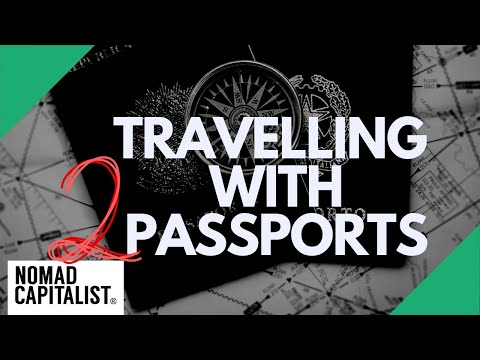How to Travel with Two Passports
October 18, 2022
Updated: February 9, 2021
Dateline: Mexico City, Mexico
Dual citizenship can be a very exotic idea for many people. It’s mystical enough that when these people first find Nomad Capitalist while looking for second passport options, they have a hard time figuring out the logistics of something that seems so obscure.
“How do I travel with my second passport?” they ask.
“How do I manage having two, three, or even four passports?” they wonder.
“What kind of problems is this going to cause and how do I avoid them?” is a common concern.
These questions can sometimes feel overwhelming. But, with a little bit of knowledge, most people find that there are pretty straightforward answers.
Here at Nomad Capitalist, we have the answers and knowledge that you’re looking for. In this article, we’ll cover which passports will help simplify your travel and what problems you should look out for while traveling.
PASSPORTS AND FLAG THEORY
Now, if you’ve kept up with Nomad Capitalist and have read at least a few of our articles or watched some of our videos on the subject, you know that my approach to citizenship is a little different from that of other people.
The traditional dual citizen that people see on YouTube or Instagram is a Canadian or a US citizen that has branched out to explore somewhere else. Perhaps they had a grandparent from Ireland or another ancestor from Italy or Poland and picked up their second citizenship through descent.
This person now has two passports that allow them to travel visa-free around the European Union (EU) and North America. At this point, they’re basically traveling back and forth between the two regions, living in one and visiting the other. This is a relatively straightforward way of handling having two passports.
If you can get a European passport through ancestry, that’s fine. In the long term though, having a European passport may be a negative for your tax strategy. However, if you can get a free passport, you should take the opportunity while you can.
What I’m concerned with, and what we look into here at Nomad Capitalist, is how you can get and use passports to support your financial strategy and nomadic lifestyle — meaning passports that you can obtain from a country that you can use as a base in your international strategy to go where you’re treated best.
This means looking at all the available options that will best suit your needs rather than simply picking a place that sounds nice and trying to make it work.
As far as traveling is concerned, this involves knowing what kind of opportunities for visa-free travel are available through each citizenship. To this end, we’ve created the Nomad Passport Index to help our readers. Not only does the index account for visa-free travel but it also considers factors such as taxes and public perception to better inform you of a passport’s true value based on your personal situation and needs.
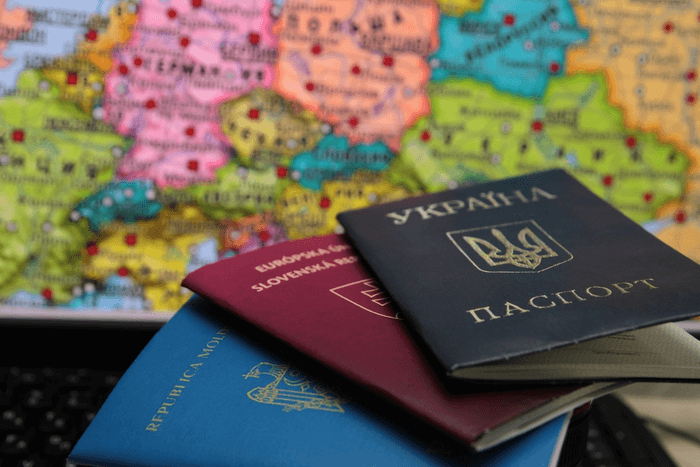
We have also created a tiered system to break down the quality of travel available with each passport. For this article, we’ll focus on these three tiers:
- Tier A Passports: Since the United States is the most difficult country to get into, Tier A passports are from countries that have visa-free access to the US as part of the US Visa Waiver Program. This is a very short list.
- Tier B Passports: These passports allow those carrying them to visit Europe’s Schengen Area without a visa. Europe is much more lenient than the US, but still not freely open to every passport holder.
- Tier C Passports: These passports are much more limited and do not allow visa-free access to the US or the EU.
The traditional example of a dual citizen is someone with two Tier A passports that has a relatively simple way of getting back and forth between destinations.
The catch is that those two Tier A passports come with tax burdens and other potential downsides that may not make the benefits of having those two passports worth it. These people will potentially have or want a series of Tier B passports that allow them a wide variety of opportunities, but with less of the drawbacks they want to avoid.
Having renounced my US citizenship, I now use a portfolio of Tier B passports that give me almost the same amount of visa-free travel as my old US passport. It’s a solution that truly allows me to go where I’m treated best.
COMMON TRAVEL COMPLICATIONS WITH MULTIPLE PASSPORTS
Whether you have two Tier A passports, a combination of Tier A and something else, or a portfolio of Tier B passports, you will certainly run into a few common complications when traveling with two passports.
The following are the issues my team, my clients, and I commonly face while traveling from country to country:
Juggling Passports with Airlines and Immigration
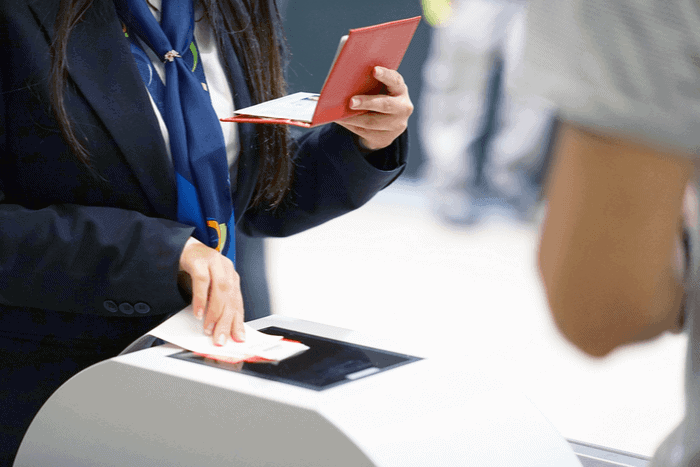
The first thing to consider is what you’re telling the airline (or whatever other method of travel you’re using) when you’re traveling between countries.
Some people worry that the airline is going to hover over them, making sure that whatever passport they entered in the airline’s database is the passport they’re going to use. In reality, this isn’t the case.
The airline’s job is to make sure that you aren’t going to be denied entry into the next country. They aren’t worried about what passport you use to get through immigration. They just want to make sure that they don’t have to get you back after you’ve been denied entry.
Customs, on the other hand, is the exact opposite. If you live in the United States, you’re supposed to enter and exit with your US passport. They don’t want you to come in as a German or Norwegian citizen if you have a US passport. While there aren’t any exit controls, they want you to leave as a US citizen as well.
They want this because, for all intents and purposes, they consider you their citizen on their soil and no one else’s. And the same thing happens if you travel to the EU. They still view you as their citizen, no matter what other travel documents you may have.
All in all, this is not as huge of an issue as it may seem at first. Each group will expect the appropriate passport and, as long as you present the documents that airlines and customs are each expecting, you shouldn’t be held up.
If you aren’t a citizen of one or both of the countries you’re traveling through, the same principle applies. Show whichever passport is most suitable to the airline you’re traveling with so they know you won’t be denied entry. Then, show customs officers whichever passport will allow you to pass through freely.
Nothing too complicated, especially if you’ve done your research beforehand.
Residencies and Traveling

Another thing to pay attention to as you travel is if you’re going through a country where you have a residency permit. What passport you use while traveling through these countries can be potentially helpful or hurtful.
For example, if I’m going to Malaysia, I’m going to advise the airline of the passport I have that has my ten-year Malaysian sticker visa in it — just to make things easy and straightforward.
At the end of the day, it might not make a huge difference to the airline which of my passports I use as long as I can get in visa-free. The problem that could come up, however, is that entering Malaysia on another passport may invalidate my sticker visa.
Mexico is another country where this could be a problem. If I have a Mexican residence permit associated with one of my passports but enter on another, it will immediately nullify my residence permit.
The solution here is to understand the terms of entry to these countries. Mexico and Malaysia don’t really care which passport you use to enter. You’ll only have problems if there’s some other kind of immigration status to be concerned with.
As long as you keep straight which passport will admit you when you get there and understand the rules of the country you’re going to, this won’t be a problem.
Passports, Privacy Concerns, and Dual Citizen Restrictions
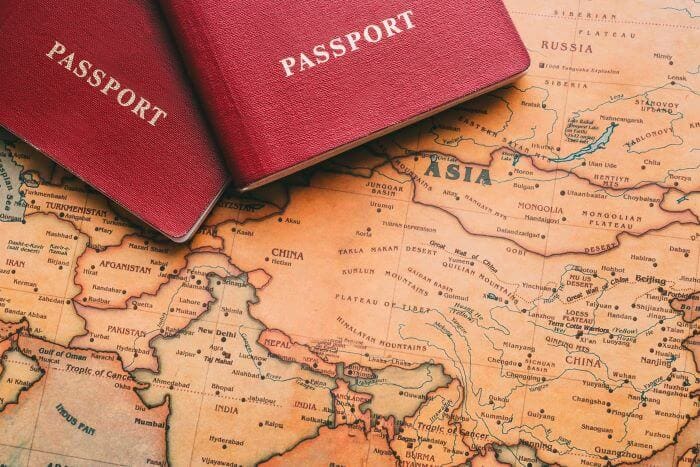
Privacy is something you’ll also want to keep in mind when it comes to restrictions on your dual citizenship status, more so for travelers who aren’t citizens of western countries.
There are certain countries where you have to report dual citizenship and other countries where you aren’t allowed dual citizenship. India, for example, only allows a very select few to have dual citizenship.
What’s often advised is if you have a second passport and want to retain your Indian passport is to always travel through a third country. In this situation, you would fly from India to somewhere where Indians have visa-free travel and then switch in that country to your second passport. By doing this, there will be no record of your second passport in the Indian immigration system.
That being said, if you find yourself in a situation like this, you’ll want to take the time to get all the information you can from the people who helped you get the passport as well as lawyers in your own country.
I personally don’t want to advise on something where you are potentially going to get in trouble at home by not reporting other citizenships.
Again, this isn’t normally an issue for westerners, but it can be for a few countries, including China.
What you should be aware of is that whatever passport you use with the airline database or to get through customs and immigration may go into a system that allows other groups to see what passports you have used as you traveled.
Any airline that flies into the United States, for example, is required to share its passenger data. You have to be careful how you enter and exit a country and how you’re representing yourself to the airline if you have a passport that you’re worried about.
There are certainly privacy concerns here, but the reality of the situation is that a lot of data is being shared across borders. Increasingly, countries will be asking you what passports you hold.
Whether it’s Electronic System for Travel Authorization (ESTA) or the Electronic Travel Information System (ETIS) in the European Union, there is going to be much less privacy around citizenships in the coming years. If you’re traveling with multiple passports, the big issue will be being cognizant of any potential problems or issues that can come up that could endanger your dual citizenship.
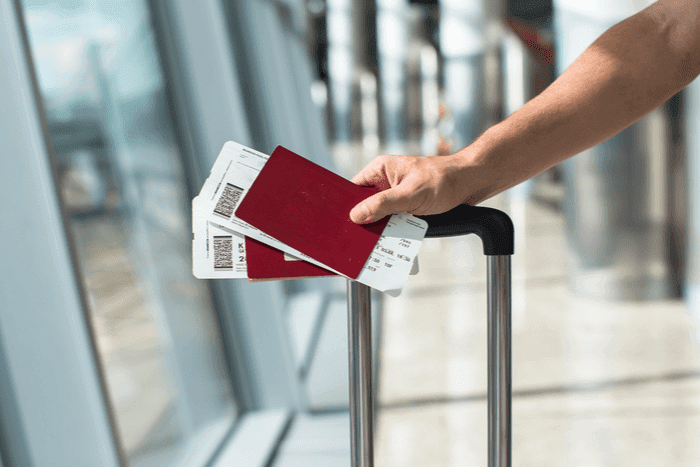
CAN A SECOND PASSPORT GIVE YOU A TRAVEL LOOPHOLE?
There are actually two definitions for “second passport.”
In one case you have two passports from two different countries where you have citizenship. The other case would be if you had two passports from the same country for whatever reason — say one of your passports was in an embassy getting a visa sticker so you got a second passport from your country so that you could continue to travel.
I get asked questions about whether you can travel in a different way, have more travel privileges or break some of the rules by having either type of second passport. People have asked if there are legal loopholes that having two travel documents can afford you.
Of course there are some privileges that come with a second passport.
Having two citizenships means you have two travel documents. If one of your countries has some kind of problem it can affect your travel options.
We have been seeing this during the COVID-19 pandemic. Persons from certain countries were refused entry when traveling to other countries. If you were Chinese and you were trying to enter a country, it didn’t matter if you didn’t actually live in China, some countries were turning away all Chinese citizens.
Additionally, not every passport can get into every country. Most Western passports have pretty good visa-free travel, but you probably can’t use them to get into Russia or China. If you have passports from two different countries it can expand your options for travel and business. It’s a good diversification strategy overall.
But other than these benefits, people want to know if a second passport can provide a kind of travel loophole.
Many want to know if you have two passports that both give access to the Schengen area in Europe if they can use the two different passports to extend their stay. For example, an American passport gives them 90 days out of the overall 180 days that they can spend in the Schengen area. The theory is that a second citizenship from another country that also has access to the Schengen area can provide an additional 90 days.
Could they use these two passports to go to the Schengen area visa-free for 90 days with their American passport and then leave, turn around and come back with their St. Lucian passport for another 90 days visa-free?
Other people have asked if they have a US passport and got a second US passport that has a different number, could they do the same thing where they leave and then come back and reenter the area using the other passport to get more visa-free travel.
While there are still a lot of countries that don’t do biometrics and some that still don’t take your photo, most countries keep good records.
When you go to a country, they scan your passport. Many countries now require biometric passports. They’re going to look at your name, date of birth, and photo and they’ll keep that on record. Sometimes they’ll capture your fingerprints or make sure they have photos.
If you leave a country and come right back on a different passport, there are certain countries that may not mind. Certain countries will let you in as long as you’re respecting their visa rules.
Let’s say you get 30 days or 90 days visa-free, if you leave every 30 or 90 days and come right back, some countries don’t care if you do that over and over again with the same passport. They can’t let you overstay but as long as you’re coming and going it’s fine.
But other countries have a rule like 90 per 180 or 30 per 365. For example, Colombia has a 90 per 180 rule, meaning you can only spend up to 90 days in a 180 day period there, regardless of the number of entries.
For those countries, it’s generally inadvisable to try and trick them by reentering with a different passport. If a country says you have visa-free access for 90 days out of every 180 days — this is the rule in the Schengen area — they aren’t talking about the passport, they’re talking about the person.
You can’t use all your different passports to come and go.
Many countries have interesting residence permit options. If you want to spend full time there I would recommend getting a residence permit or even citizenship in the country you want to live in rather than trying to trick them with two separate passports.
CONCLUSION
Many people view dual citizenship and traveling with two passports as something exotic, but what they don’t realize is that it’s really just a practical issue with a practical solution. That solution breaks down into two simple ideas:
- Enter and exit a country on its own passport, wherever possible.
- Present yourself and your documents in the most practical and suitable way possible as you travel.
Depending on the reason that you have that second passport, this will look very different in each situation.
If you have a US passport along with a Tier B passport that you picked up through economic citizenship as a Plan B, you’ll probably still use the US passport in most emerging countries if both provide you the same visa-free access.
If you have two passports (or a portfolio of passports) from nations that are very geopolitically different, like Montenegro and Serbia, appropriately using each of those passports will allow you to gain visa-free access to parts of the world you wouldn’t have on each one individually.
Sometimes these benefits are much smaller. For example, you can get into Armenia with either a US or St. Lucia passport, but the US passport will get you through faster with fewer questions.
In other countries, being a US citizen may not be as favorable.
All in all, if you’re able to create a true, cohesive story about who you are, where you’re from, where you’re going, and why you should be welcomed there, life is going to be much easier. In my experience, the more disjointed your story, the slower and more complicated your travel will be.


How to Get UAE Citizenship – The Complete Guide
Sovereignty – both national and personal – shapes ambition, secures wealth, and defines status in a shifting global order. For the high-achieving global citizen, acquiring a second or even third passport is more than a lifestyle upgrade; it’s a strategic move in long-term financial and geopolitical positioning. But not all citizenships are created equal – […]
Read more

A Gateway to Central Asia: New Kazakhstan Golden Visa Program for 2025
Central Asia just raised the stakes in the golden visa game. In May 2025, Kazakhstan officially launched a 10-year Golden Visa program in an ambitious move to position the country as a serious contender in the global investor migration space. At a time when other international regions are rolling back their citizenship and residency options, […]
Read more

Top Countries Offering Golden Visas in 2025
Residency is no longer about lifestyle – it’s about leverage In an increasingly unpredictable world, Golden Visas offer something most governments can’t: certainty in exchange for capital. They are more than migration tools; they are strategic safeguards offering residence rights, future citizenship, global mobility, and access to tax-friendly jurisdictions. For investors, entrepreneurs and globally minded […]
Read more




